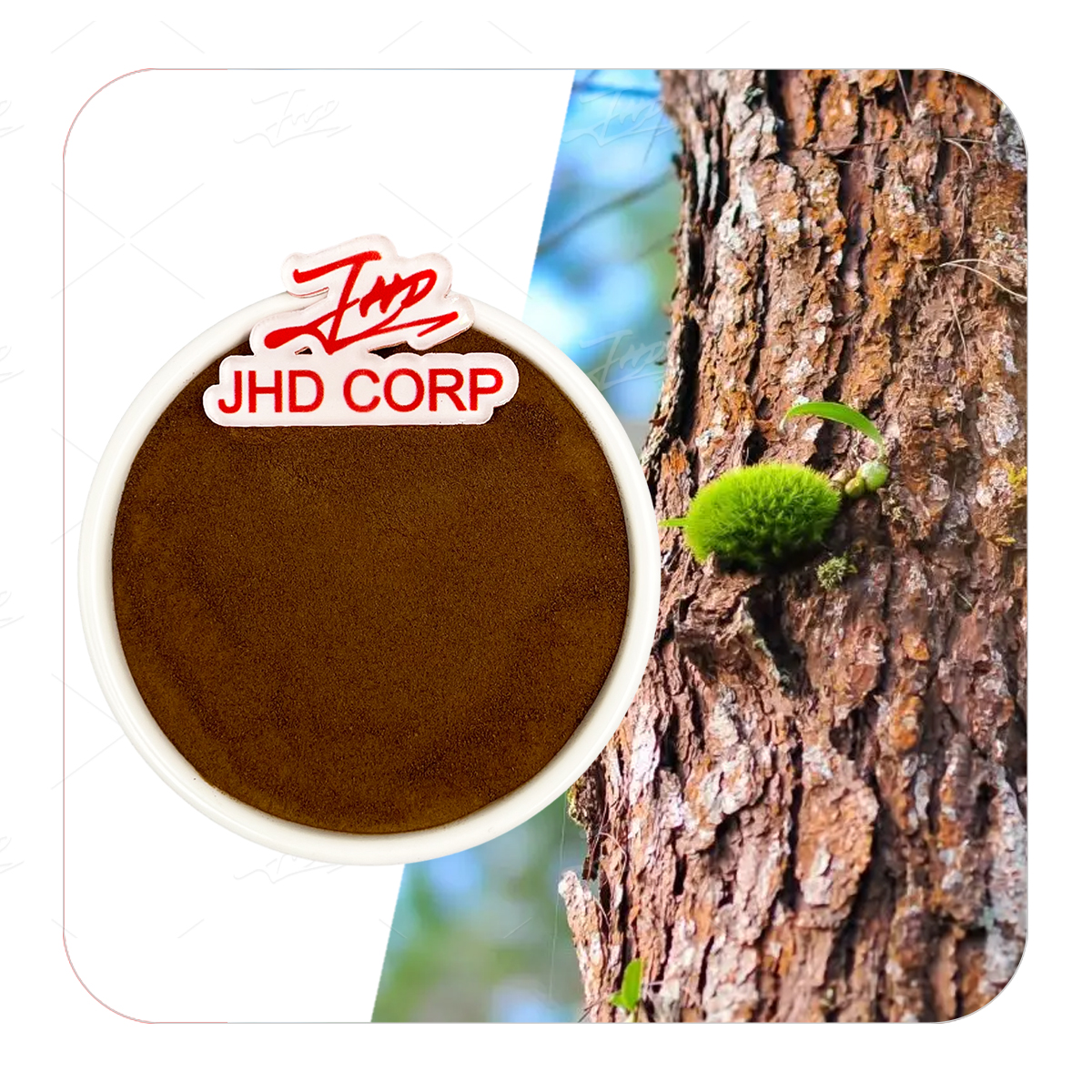Welcome to JHD Nutrasource!
Shop
Bark Extract
Bark Extract is a general term that refers to extracts derived from the bark of various trees. The specific properties and benefits of bark extract depend on the tree species from which it is sourced. Common sources include Cinnamon (Cinnamomum verum), White Willow (Salix alba), and Phellodendron (Phellodendron amurense). Bark extracts are typically available in the form of a light brown to dark brown powder or liquid and are rich in bioactive compounds such as alkaloids, tannins, and flavonoids.
Description
| Product Name | Bark Extract |
| Appearance | Light yellow powder |
| Specification | 97% |
| Test Method | HPLC, TPC, TFC |
| Source | Root |
| Certificate | cGMP/ISO/HACCP/KOSHER/HALAL |
Function
- Anti-inflammatory Properties: Many bark extracts contain compounds that help reduce inflammation in the body. For example, salicin in white willow bark acts similarly to aspirin, reducing inflammation and pain.
- Antioxidant Properties: Bark extracts are rich in antioxidants, which help neutralize free radicals and reduce oxidative stress, protecting cells from damage.
- Antimicrobial Activity: Bark extracts often contain antimicrobial compounds that can help combat bacterial and fungal infections. For instance, cinnamaldehyde in cinnamon bark has strong antimicrobial properties.
- Metabolic Health: Some bark extracts, like cinnamon bark extract, can help improve insulin sensitivity and reduce blood sugar levels, making them beneficial for managing type 2 diabetes and supporting overall metabolic health.
- Cardiovascular Health: Certain bark extracts may have beneficial effects on cardiovascular health by reducing cholesterol levels and improving blood lipid profiles.
- Pain Relief: Compounds in bark extracts, such as salicin in white willow bark, can help reduce pain and discomfort, making them useful for treating headaches, muscle aches, and joint pain.
Application
- Dietary Supplements:Bark extracts are widely used in dietary supplements to support various health benefits, including anti-inflammatory, antioxidant, and metabolic support. They are available in various forms such as capsules, tablets, and powders.
- Functional Foods and Beverages: Bark extracts can be incorporated into functional foods and beverages to provide additional health benefits. They are used in products such as fortified drinks, health bars, and supplements designed for specific health needs.
- Traditional Medicine: In traditional medicine, bark extracts have been used for centuries to treat a variety of conditions, including inflammation, pain, and digestive disorders.
- Cosmetics and Skincare: Due to their antioxidant and anti-inflammatory properties, bark extracts are used in skincare products to promote skin health and reduce inflammation. They are used in creams, lotions, and other topical products designed to protect the skin from environmental damage and promote overall skin health.
- Pharmaceuticals: In the pharmaceutical industry, bark extracts are being studied for their potential use in treating various conditions, including inflammatory diseases, infections, and metabolic disorders.

